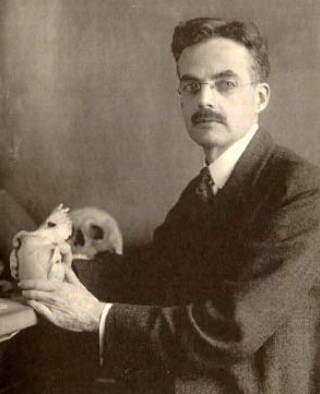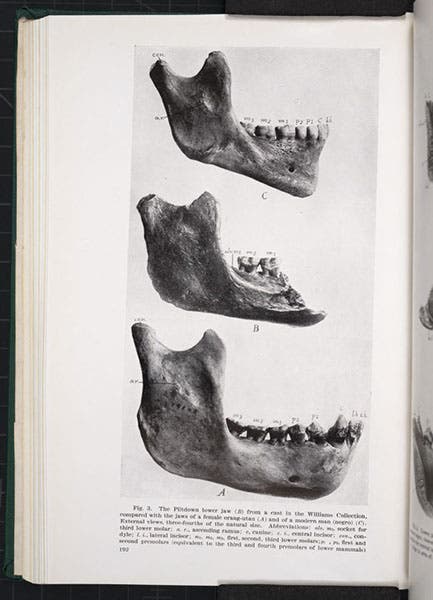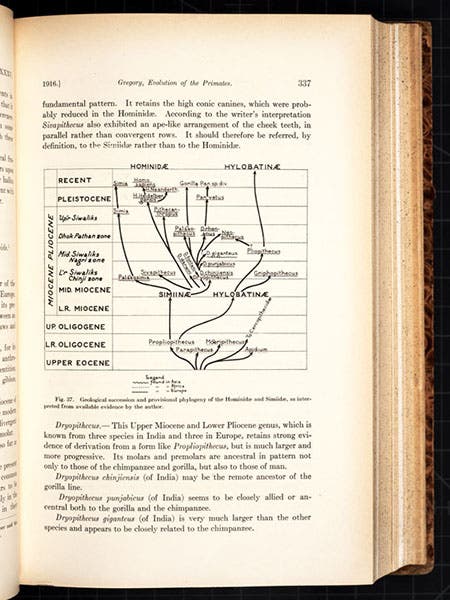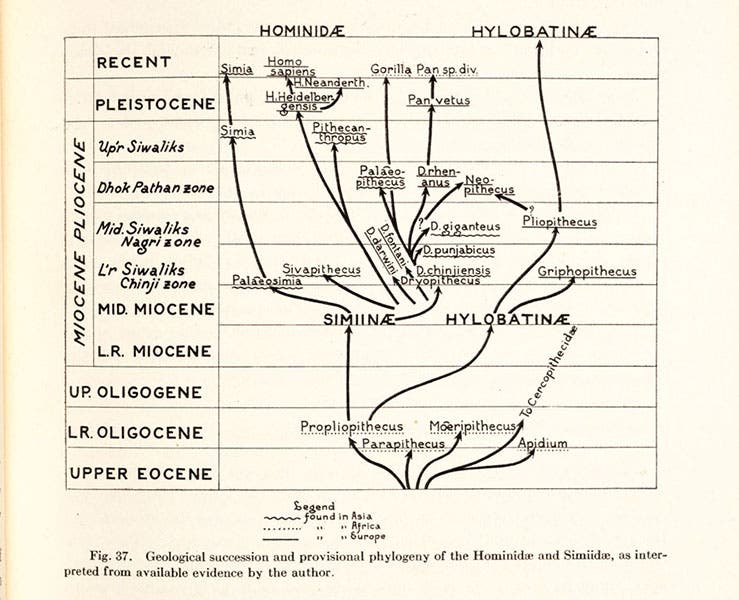Scientist of the Day - William King Gregory
William King Gregory, an American paleontologist, was born May 19, 1876. Gregory did important work in comparative anatomy and paleontology, teaching at Columbia University for many years and serving as curator of no less than three departments at the American Museum of Natural History, following the lead of his mentor, Henry Fairfield Osborn. But today we are going to discuss his entry into the field of physical anthropology, which came when he was still young and just starting out at the Museum.
In 1912, an amateur English archaeologist, Charles Dawson, uncovered some hominid bones at a site named Piltdown that greatly excited the establishment in England. Piltdown man, as he came to be called, had a large human-size brain but an ape-like jaw, which suggested that it was perhaps ancestral to later hominids such as Neanderthal and Cro-Magnon. Gregory was excited as well, and he mounted an exhibition at the American Museum of Natural History in New York and made a restoration of the Piltdown skull, using plaster casts from London and following the lead of the English anthropologist Arthur Smith Woodward. Gregory published an article on the specimen in 1914, essentially announcing Piltdown to the American public. The initial illustration was a charcoal drawing by James Howard McGregor, an anatomist at the museum, that attempted to breathe life into this distant human ancestor, Eoanthropus, the “dawn human” (see first image above).
Gregory also provided a photograph of his skull restoration (third image, just above), and a comparison of the Piltdown jaw (center in image below) with the jaw of an orangutan (bottom) and a modern human (top). We showed all three of these illustrations in the catalog of our 2012 exhibition, Blade and Bone: The Discovery of Human Antiquity.
Neither Gregory nor McGregor knew that the Piltdown fragments were faked, the skull pieces taken from a recent human skull and dyed to look old, while the piece of jaw actually belonged to an orangutan, and had similarly been altered to look ancient. The hoax would not be detected until 1953.
Two years later, Gregory wrote another short article for a different American Museum journal, this time on the subject of human evolution in general, and he included in this article a primate evolutionary tree of his own devising. Trees of descent were still a rarity in evolutionary biology; Ernst Haeckel had invented such a diagram in 1874 (you can see Haeckel’s tree at our Scientist of the Day entry on Haeckel), and we can find only a handful of tree diagrams in the historical literature before Gregory. We show you Gregory’s tree twice, as it appears on the printed page (fifth image, above), and in detail, to help with legibility (sixth image, below). This is a remarkably astute tree for someone still new to the field. It shows Pithecanthropus, the Java man of Eugène Dubois, as an offshoot and not in the direct line to modern humans, as we would do today. It does the same with Neanderthal man. Most astonishingly, it places Homo heidelbergensis as the source of both Neanderthal and modern humans, as we also do today. Heidelberg man, discovered by Otto Schoetensack and announced in 1908, was brand new to the anthropological community and known only by a single jaw, yet Gregory somehow figured out where it belongs in the human evolutionary tree. And finally, we point out that Gregory left Piltdown man out of this diagram entirely. Perhaps he too had his suspicions.
I should reiterate that physical anthropology played only a small and early part in Gregory’s lengthy and distinguished career. Edwin Colbert, in his long obituary memorial for the National Academy of Sciences in 1970, hardly mentioned these two papers. My grandson, could he read, would be horrified that I left out Gregory’s 1926 description of the first Protoceratops specimen, discovered in the Gobi Desert in 1923. But frankly, to me, Gregory’s foray into human origins is more interesting than anything else he did (except for describing Protoceratops).
Dr. William B. Ashworth, Jr., Consultant for the History of Science, Linda Hall Library and Associate Professor emeritus, Department of History, University of Missouri-Kansas City. Comments or corrections are welcome; please direct to ashworthw@umkc.edu.











